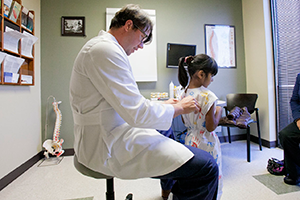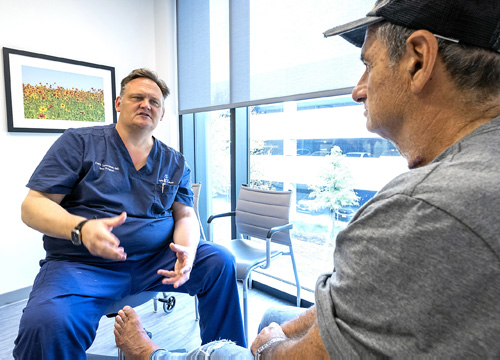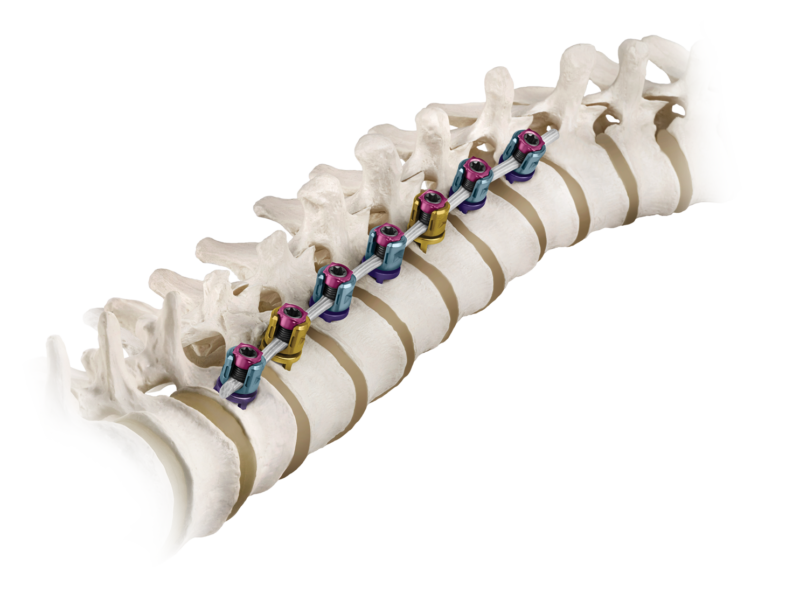
Learn more about the providers at Texas Spine and Scoliosis, the only spine specialized neurosurgery, orthopedic surgery, and non-surgical rehabilitation group in the central Texas area.

Transforaminal Lumbar Interbody Fusion (TLIF) is typically used to remove a degenerative disc and relieve pressure on nerve roots in the lumbar spine.
Using the minimally invasive procedure involves a small incision in the back. Using a portable X-ray machine, the surgeon locates the diseased vertebral levels. Making the smallest incision possible, the surgeon uses a combination of dilators and tubular retractors to access the vertebra and remove the degenerative disc. An implant with bone graft is placed in the empty space, this realigns the vertebral bones and relieves pressure on the nerve roots.
Advantages of the minimally invasive TLIF procedure over traditional spine surgery include smaller incision and less disruption to muscle tissue. This procedure is generally performed in an outpatient setting or 23 hour stay. Most patients can return to normal activity within 2-3 weeks following surgery.
| Approach | Full Name | Access Route | Typical Levels Treated | Muscle Disruption | Advantages | Risks/Limitations |
|---|---|---|---|---|---|---|
| TLIF | Transforaminal Lumbar Interbody Fusion | Posterior (from the back, side of spinal canal) | L2 to S1 | Moderate | Good disc space access; unilateral approach reduces nerve retraction | Nerve root injury risk; limited disc space visualization |
| XLIF | Lateral Lumbar Interbody Fusion (eXtreme) | Lateral (through psoas muscle) | T12 to L5 (not L5-S1) | Minimal | Large graft placement; minimal blood loss | Risk to lumbar plexus; not suitable for L5-S1 |
| iLIF | Interlaminar Lumbar Interbody Fusion | Posterior (between spinous processes) | L2 to S1 | Minimal | Preserves stabilizing structures; reduced blood loss | Technically demanding; newer technique, limited long-term data |
| PLIF | Posterior Lumbar Interbody Fusion | Posterior (midline) | L2 to S1 | High | Direct access to disc; bilateral cage placement possible | More muscle disruption; higher blood loss |
| ALIF | Anterior Lumbar Interbody Fusion | Anterior (through abdomen) | L4 to S1 | Minimal (no back muscle disruption) | Wide disc access; large implant size possible | Major vessel injury risk; requires vascular access surgeon |
Texas Spine and Scoliosis is a regional referral center for the treatment of back and neck pain and scoliosis

Learn more about the providers at Texas Spine and Scoliosis, the only spine specialized neurosurgery, orthopedic surgery, and non-surgical rehabilitation group in the central Texas area.
 Texas Spine & Scoliosis approved for the new BRAIVE scoliosis tethering study
Texas Spine & Scoliosis approved for the new BRAIVE scoliosis tethering study

Read about various patient success stories that have been performed by the physicians at Ascension Texas Spine & Scoliosis